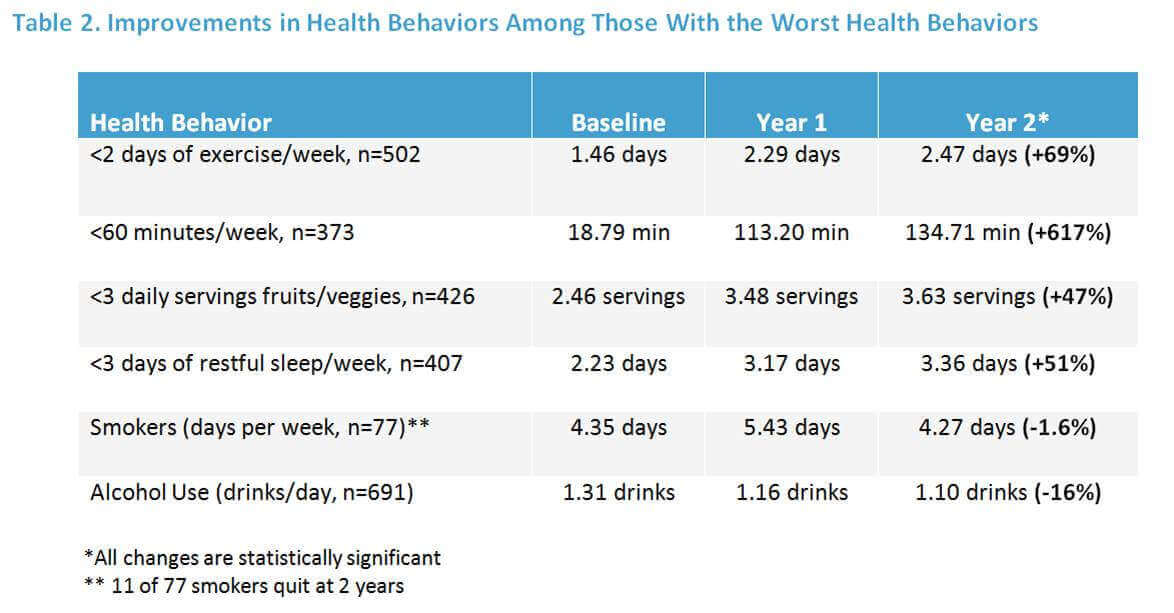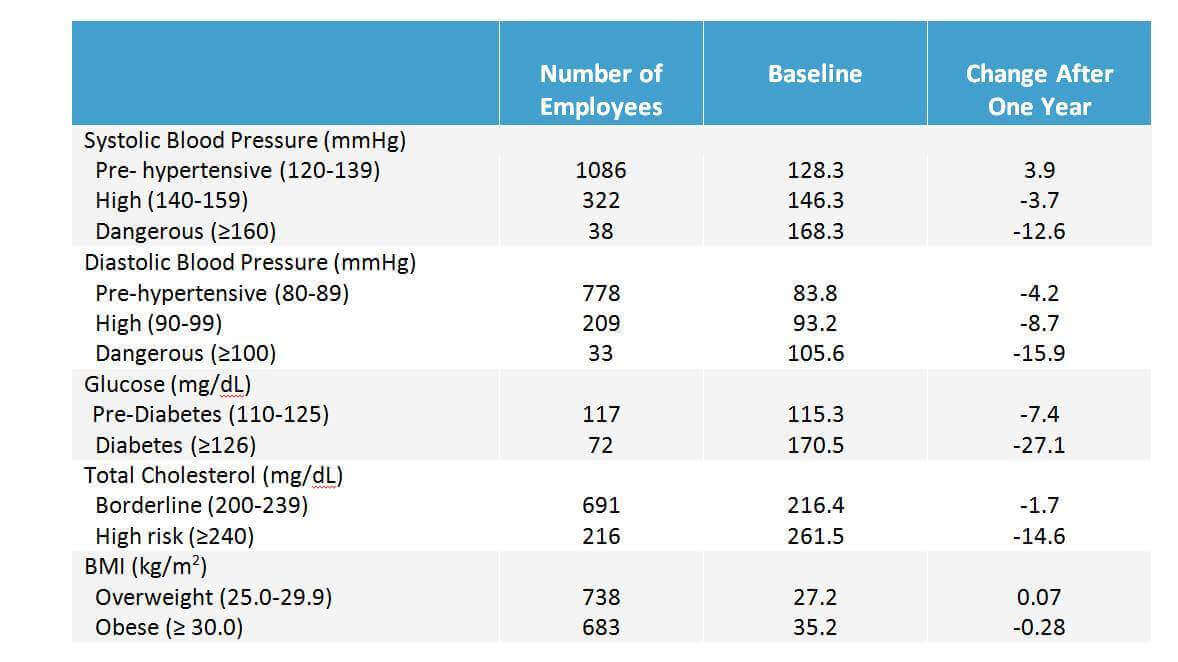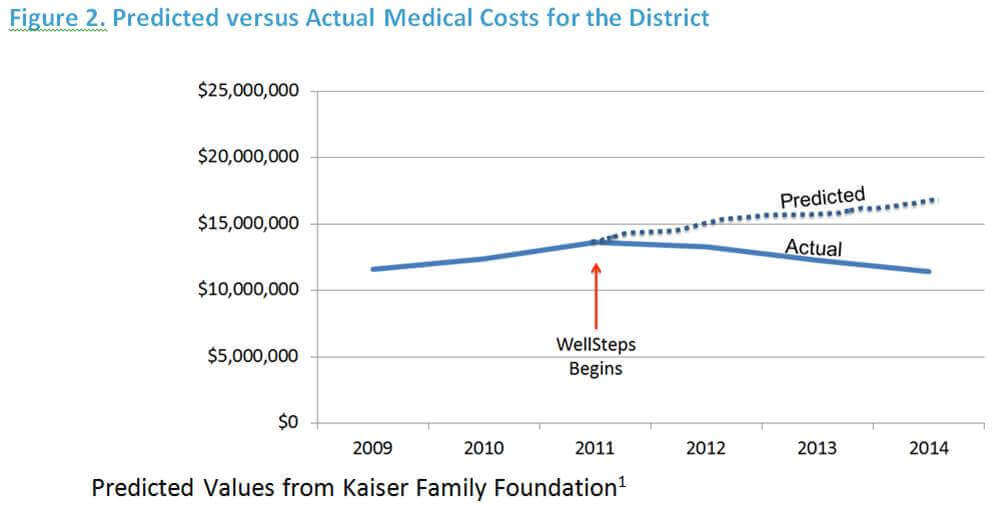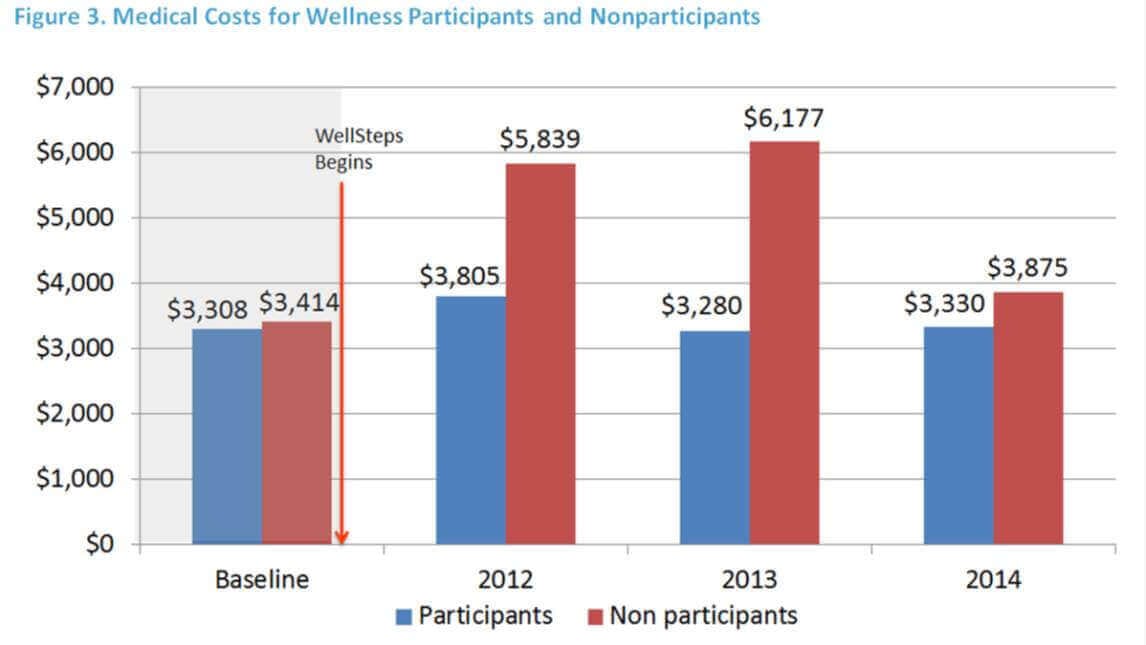For three years, a school district implemented comprehensive employee wellness programs and saw many benefits. This blog summarizes the research demonstrating that elevated health risks were reduced and medical costs were lowered for this school district.
It is based entirely on peer-reviewed, scientific evidence and you’ll discover how similar programs can benefit your company as well.
The Worksite
For the three years prior to the implementation of a worksite wellness strategy, (between 2009 and 2011), the 3,269 employees of a large school district in the Rocky Mountain area experienced total medical costs of between $11,000,000 and $13,000,000 per year. Equally sized employers in the Western U.S. experienced similar health care cost trends.
During this time period:
- 60 percent of district employees suffered from having higher weight or obesity
- 61 percent had hypertension or prehypertension
- 39 percent had high or borderline high cholesterol
- 5 percent had diabetes or pre-diabetes
- average age was 50
- approximately 15% of employees worked in manual occupations
The district health care bill was paid for by local taxes. The district was, and continues to be, fully insured with a retained-retention agreement which gives their medical plan the benefits a self-funded health plan. This means that health care premium payments in excess of health care costs are returned to the district.
Claims costs above $250,000 are reinsured by a stop loss policy. The combination of poor health behaviors, elevated health risks and increasing medical cost trends convinced the district to begin a comprehensive worksite wellness strategy.

RELATED: 9 Reasons School Wellness Programs Are a Smart School Strategy
Corporate Employee Wellness Programs
A full time worksite wellness program coordinator was hired and WellSteps was hired as the worksite wellness vendor. The wellness program design was based on the premise that employee-related expenses such as absenteeism, presenteeism, and medical costs are greatly influenced by poor employee health.
Poor health is the direct result of elevated health risks most of which are driven by poor lifestyle choices. Therefore, to impact employee-related expenses, wellness programming focused on the root cause of poor health ─ unhealthy behaviors.
Poor health is the direct result of elevated health risks most of which are driven by poor lifestyle choices.
The wellness program at the district was designed to help employees improve health behaviors and to make the overall work culture more supportive of good health practices. The program provided employees with the education, awareness, motivation, tools, strategies, supportive policies and social support needed to adopt and maintain healthy behaviors as scientifically well-documented by Dr. Michael O’Donnell.
Gathering Data
Before participating in the program, employees completed a self-reported Personal Health Assessment (PHA) after which they received individualized electronic feedback. Additionally, to assess health-promoting policies and environments, the onsite wellness program coordinator and some committee members completed a health culture audit called “The Checklist to Change.”
RELATED: Checklist to Change Personalized Audit Questionnaire
Data from the PHA and Checklist to Change were summarized and discussed by a WellSteps account manager with the onsite Wellness coordinator. Figure 1 shows the components that were used to design the overall wellness strategy.
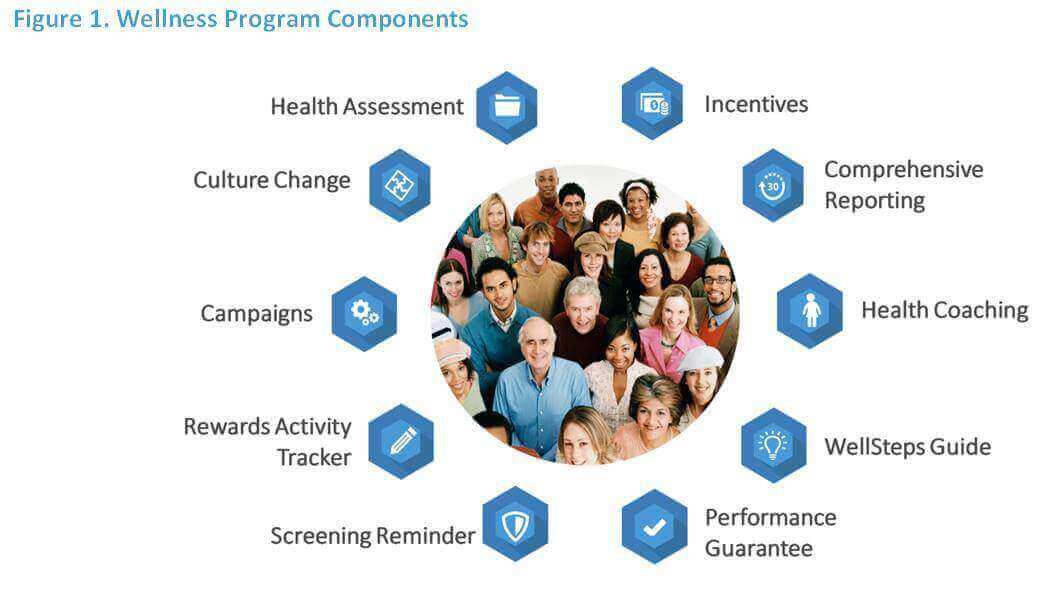
The program incorporated administrative planning, baseline data evaluation, culture change and communication strategy, biometric screening, behavior change campaigns, and more. Four campaigns lasting four to eight weeks were offered each year.
Behavior Change Campaigns are unique to WellSteps. They are designed to improve health behaviors and build self-efficacy by reducing the behavior change process to manageable weekly tasks.
RELATED: How to do Biometric Screenings: The Complete Guide
Health and Wellness Incentives
Two types of incentives were used to promote program participation. Those who completed behavior change campaigns were entered into a drawing for gift cards to local retail stores. A second, more robust incentive was benefits-based. These were changed each year and are described in Table 1.

RELATED: Wellness Program Incentives: The Complete Guide
Results from the Corporate Employee Wellness Program
The WellSteps model that was used suggested that improved health behaviors would lead to lower health risks and subsequent reductions in medical costs. Peer-reviewed scientific papers documenting the effectiveness of the model at this district have been previously published here and here.
Table 2 shows improvements in nutrition, physical activity, tobacco, and alcohol use among those with the unhealthiest baseline behaviors. These behaviors improved from baseline and continued improving through at least two full years. Table 3 shows changes in biometric health risks. There was consistent risk reduction among those who had the unhealthiest numbers at baseline.
RELATED: Employee Health Programs Worth Investing In
Did This Wellness Program Save Money?
Figure 2 below shows the predicted medical costs if the district had followed the same cost trends of comparable worksites. This prediction provides a good estimate of what the cost trend would have been in the absence of a wellness program.
But the district did not experience the predicted trend of comparable worksites. Rather, district medical costs peaked in 2011, then decreased each year through the end of the evaluation period (2014). The district medical costs in 2014 ($11,390,481) were lower than the costs in 2009 ($11,590,407) basically showing a zero trend across the six-year evaluation period.
Individual wellness program participation data were then combined with individual medical cost data to allow for comparison of the medical costs between wellness program participants and non-participants. Six years of medical cost data were evaluated including the three years prior to wellness program implementation.
The Results
The “pre-program” cost data was used to statistically remove pre-existing differences in cost between participants and non-participants. During the three-years prior, program non-participants had slightly higher medical costs ($3,414 vs $3,308). No differences existed in age or sex between participants and non-participants.
Post-implementation, there was a dramatic difference in the cost of medical care between the employees who participated in the wellness program and non-participants in 2012 and 2013, and to a lesser extent in 2014 (Figure 3).
During the three-year period starting with 2012 and ending with 2014, the program participants cost the district $5,025,138 less in medical costs than non-participants. Because the impact of other variables was statistically removed, it is highly likely that this cost savings is primarily due to the impact of the comprehensive wellness program.
The cost of providing the wellness program during the same three year period was $1,412,736. Thus, the benefit to cost ratio for the program was 3.56 ($5,025,138/$1,412,736). During this study there were no changes in the district’s health plan design.
RELATED: Wellness ROI vs VOI: The Best Employee Well-Being Ideas Use Both
Short Comings
Despite the improvements in health behaviors and risks, BMI did not improve. But while the U.S. population as a whole grew heavier during the three years under evaluation, the participants in this study did not. So, while there was no loss of weight, participants did not gain weight either.
Takeaways
Randomized clinical trials (RCTs) are an evaluation gold standard and none of the studies on which this report is based were (RCTs). However, it is currently illegal to randomize employees to a non-wellness program condition.
This criticism aside, we ask: If the worksite wellness program was not responsible for these documented improvements in health behaviors, health risks, and medical costs, than what was? These findings show the published research that answers the question, do wellness programs save money?
A worksite with a zero medical cost trend over a six-year period is extremely rare. This paper provides ample evidence to show that worksite wellness strategies can be effective at promoting health and reducing employee medical expenses.
In summary, this paper provides ample evidence to show that worksite wellness strategies can be effective at promoting health and reducing employee medical expenses.
Note: the health care cost findings in this blog were previously published in the journal Preventive Medicine.
Frequently Asked Questions
What should an employee wellness program include?
An employee wellness program, in general, is any worksite activity designed to support better employee health. These activities often include medical screenings, incentives for healthy behaviors, behavior change interventions, health coaching, fitness, nutrition, and weight loss programs, social support, gamified wellness challenges and much more.
What is an example of a wellness program?
Employees are not mere economic units—the entire spectrum of human well-being plays into how well an employee feels and performs at their job. For this reason, a good employee wellness program must take into consideration the following:
- physical wellness
- mental wellness
- emotional wellness
- social wellness
- financial wellness
What is the goal of an employee wellness program?
A well organized employee wellness program can produce important outcomes such as improved employee health behaviors, lower health risks, and reduce health care costs. They are also effective at improving employee morale and productivity.
Get started on your company’s wellness program by scheduling a free demo with our team today!
